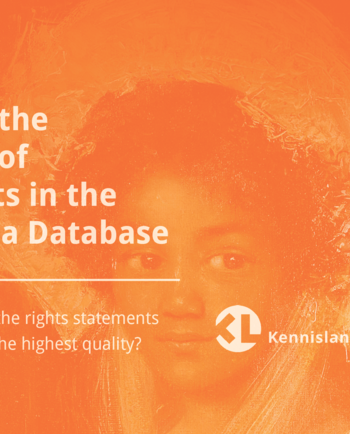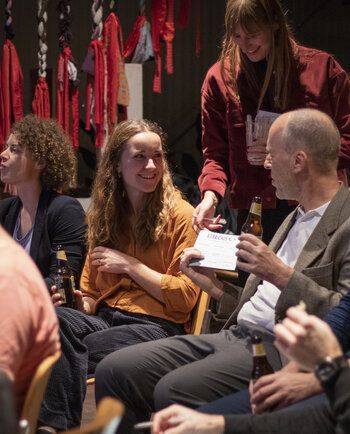
6 OER myths busted
Lisette Kalshoven Adviseur auteursrecht en open onderwijsClearing up the discussion for adoption of OER in education
Over the last couple of months I have been talking a lot with people about Open Educational Resources (OER). Trying to help teachers to deal with copyright law in the production of their own material and trying to help them license it in a way that suits their intentions. In these conversations with educators the same issues, myths and questions seem to come up naturally, and they cloud the bigger discussion at hand.
I have also been thinking about policy recommendations for the EU within the Creative Commons Open Education policy project. Within the last mentioned project Kamil Śliwowski from Creative Commons Poland did a brief study about the myths and obstacles surrounding OER, and how we can work with them. The results were reassuringly unsurprising. People are worried about switching to an all online education system. They are worried about finding and rating the materials quality-wise and often fear it will cost teachers far too much time. Time to debunk the most common OER myths to clear the air for serious discussion of adapting open materials in education everywhere.
1. ‘I do not like MOOCs, so we are not doing OER’
Open Educational Resources and MOOCs (Massive Open Online Courses) are not the same thing. As a matter of fact, not all MOOCs are even OER. As defined by the Hewlett Foundation:
"OER are teaching, learning, and research resources that reside in the public domain or have been released under an intellectual property license that permits their free use and re-purposing by others. Open educational resources include full courses, course materials, modules, textbooks, streaming videos, tests, software, and any other tools, materials, or techniques used to support access to knowledge."
So whether you like a MOOC model or not, it is not a convincing argument on adopting OER materials in the classroom.
2. ‘My students want hardcopies of their materials, OER cannot provide that’
Though a lot of OER are presented initially online, as it allows for easier cooperation during the creation phase, there is no rule that OER should be virtual-only. You can have an OER as video, as a pdf, as a printed book, or any form you might like. It is not about the fact that it is online or in a hardcopy, it is about the ability to adapt, improve and use. Therefore it is recommended that OER are available in an open format that can be used in many different contexts (e.g. not .wmp, but .mp4; not .doc but .txt or .pdf).
4. ‘Are open resources hard to find?’
Actually not. Though it is not as easy as simply using the material your school choose the use from a ‘closed’ publisher, there a lot of databases filled with OER for every level of education, most with some sort of review and rating system. Examples include: Open4US, Commonwealth for Learning, KlasCement, and Curriki. There are also platforms that allow you to search for content you can re-use in your resource. Examples are Europeana (look for the ‘can I reuse this’ option), Wikimedia Commons (all images are reusable), or even search through Google (look for the filter options).
The beauty of Open Education is that if you cannot find exactly what you are looking for you can easily combine and create the thing that you need, and upload it somewhere for a colleague to use and perhaps improve.
5. ‘OER are free, so there is no business model possible’
Though business models are still being developed for OER, the primary misconception with regard to business models is that OER need to be free (as in gratis). This is not the case. Licensing something openly does not mean you cannot charge for it. Open refers to free as in free speech, not free beer. There is no reason why there cannot be any money made from open products.
There are several studies on business models, but one need not look further than Coursera for an idea. Though the materials on Coursera are not OER (not openly licensed), the company makes money from selling data on the students to recruiters, and the company Boundless in the US has developed a business model for open textbooks.
6. ‘OER adoption is just too radical for my institution’
Adopting an OER program does not mean that you have to throw away all your closed resources on day one. A lot of OER are developed as a supplement to the current teaching methods, especially in primary and secondary education (up to 18 years of age). Start with one book for one class in the fall semester. Share the assignment you created as a teacher openly on one of the (inter)national platforms intended for it. Include one or two open textbooks in your proofreading of new textbooks for the class you teach in spring. See the advantages of OER for yourself, gather evidence and use the evidence collected all over the world about the value of open and then discuss a broader adoption of the system in your institution. To use a cliche: Rome was not built in one day.
Though this is not a complete list of all myths surrounding Open Educational Resources, I hope to have cleared up the most frequently used. In order to have a pointed discussion about the pros and cons of the grand-scale adoption of OER, we need to have less cloudiness in the conversation through these myths and more clarity. Hopefully this is a step in the right direction.
Did I miss an important myth? Question about OER? Mail me: lk@kl.nl.


